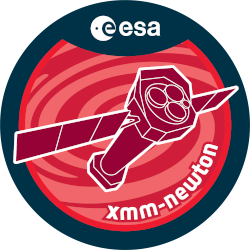

| Proposal ID | 020223 |
| Title | TRACKING THE ANDROMEDA Z-SOURCE CANDIDATE RX J0042.6+4115 |
| Download Data Associated to the proposal | https://nxsa.esac.esa.int/nxsa-sl/servlet/data-action-aio?obsno=0202230201 |
| DOI | https://doi.org/10.5270/esa-63pxg4n |
| Principal Investigator, PI | Dr ROBIN BARNARD |
| Abstract | A Z-source candidate has been identified in the core of M31 using data fromexisting XMM-Newton observations. Z-sources are perhaps the most extreme form ofneutron star binary; powered by Roche lobe overflow from a low mass secondaryvia disc accretion, their X-ray luminosities can reach 10^39 erg/s,and exhibitcomplex correlations between luminosity and X-ray spectra so thatthey trace outZ-shapes in colour-colour diagrams over a few days. We propose a programme offour 20 ks observations over 4 days to trace the Z-track, which willconclusively prove whether or not the candidate is a Z-source. Also, theprogramme would access for the first time variability over time-scales of a fewdays in the 120 sources in the field of view. |
| Publications |
|
| Instrument | EMOS1, EMOS2, EPN, OM, RGS1, RGS2 |
| Temporal Coverage | 2004-07-16T16:17:05Z/2004-07-19T20:23:32Z |
| Version | 17.56_20190403_1200 |
| Mission Description | The European Space Agencys (ESA) X-ray Multi-Mirror Mission (XMM-Newton) was launched by an Ariane 504 on December 10th 1999. XMM-Newton is ESAs second cornerstone of the Horizon 2000 Science Programme. It carries 3 high throughput X-ray telescopes with an unprecedented effective area, and an optical monitor, the first flown on a X-ray observatory. The large collecting area and ability to make long uninterrupted exposures provide highly sensitive observations. Since Earths atmosphere blocks out all X-rays, only a telescope in space can detect and study celestial X-ray sources. The XMM-Newton mission is helping scientists to solve a number of cosmic mysteries, ranging from the enigmatic black holes to the origins of the Universe itself. Observing time on XMM-Newton is being made available to the scientific community, applying for observational periods on a competitive basis. |
| Creator Contact | https://www.cosmos.esa.int/web/xmm-newton/xmm-newton-helpdesk |
| Date Published | 2005-08-19T00:00:00Z |
| Last Update | 2025-08-04 |
| Keywords | "time variability", "conclusively prove", "z sources", "XMM", "J0042.6", "xray spectra", "120 sources", "z track", "existing xmm newton", "z shapes", "xray luminosities", "z source candidate", "thatthey trace", "colour colour diagrams", "time scales", "XMM-Newton", "neutron star binary", "M31", "z source", "roche lobe overflow", "exhibit complex correlations" |
| Publisher And Registrant | European Space Agency |
| Credit Guidelines | European Space Agency, Dr ROBIN BARNARD, 2005, 'TRACKING THE ANDROMEDA Z-SOURCE CANDIDATE RX J0042.6+4115', 17.56_20190403_1200, European Space Agency, https://doi.org/10.5270/esa-63pxg4n |